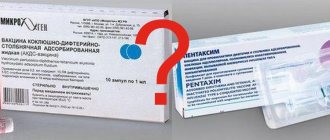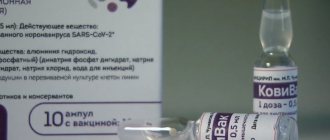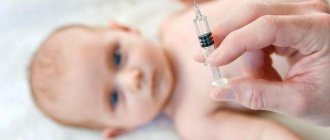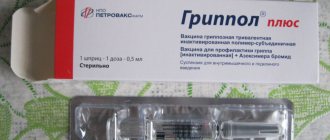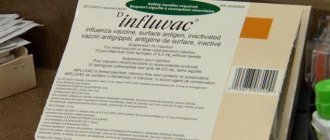Imported analogues of domestic vaccinations for children
Only the mother can decide whether to be vaccinated with Russian vaccines or their foreign analogues. However, before making a final choice, it is worth consulting with a qualified doctor.
From BCG
Babies are given protection against tuberculosis in the first days of life, in the maternity hospital.
The vaccine is valid for approximately seven years, after which it is necessary to vaccinate again.
Today, all over the world, BCG vaccination is done with the same vaccine containing live microorganisms..
Only the manufacturers differ.
Since transportation from other countries is quite long and if its conditions are violated, the death of components intended for introduction into the body and the formation of an immune response may occur, experts recommend giving preference to the Russian vaccine. Another advantage of the latter is that its development took into account the peculiarities of our life, nutrition, children’s genetics, etc.
In Europe, children are not given BCG because the standard of living meets high standards. In Russia, the risk of encountering tuberculosis is tens of times greater.
For hepatitis
The first vaccine against hepatitis B is given to children in the maternity hospital, then two more booster vaccinations are given.
A domestically produced drug is used. You can get a paid vaccination in a private clinic for money.
As a rule, the anti-hepatitis component is included in polyvaccines.
The best are considered: “Infanrix hexa”, “Engerix”. Mono-vaccinations: “Eberbiovak NV”, “Euvax V”, “Shanvak-V”.
The effectiveness of Russian and foreign vaccines against hepatitis is the same, only tolerability, pain, swelling and other unpleasant things differ. The consequences of the introduction after foreign analogues are rare.
DTP
One of the most difficult to tolerate vaccinations protects a child from three dangerous infections at once: whooping cough, diphtheria and tetanus. Reactions occur due to the content of living microorganisms. In addition, the Russian vaccine is poorly tolerated due to the fact that it is made on the basis of aluminum hydroxide and contains a very dangerous component called “merthiolate.”
According to the national schedule, it is carried out at 3, 4.5 and 6 months, with revaccination at one and a half years.
Popular foreign analogues:
- "Infanrix". The weakened pertussis element, polycomponent nature, as well as the absence of merthiolate and formaldehyde in the composition make the drug one of the best existing on the market;
- Pentaxim is a popular French vaccine that protects not only against whooping cough, diphtheria and tetanus, but also Haemophilus influenzae and polio;
- "Tetrakok" - DTP and polio.
If possible, DTP vaccination should be given preference to foreign vaccinations. Severe reactions to them are practically not noted.
From polio

There are two types of vaccines against this infection:
- OPV . Contains a live weakened strain of the virus. Produced in Russia, not used abroad. It is more difficult to tolerate, however, it guarantees more powerful protection against polio;
- IPV . Contains an inactivated strain and is used where the risk of contracting polio is minimal or absent (the Russian Federation does not apply to such territories). This type is represented by foreign vaccines.
Immunization is carried out with the following vaccination material:
- monocomponent – “Poliorix”, “Imovax Polio”;
- multicomponent - “Pentaxim”, “Infanrix Hexa”.
Immunization schedule at an early age: 3, 4.5 and 6 months, with revaccination at 18 years.
If parents have decided to protect their child with paid polyvaccines, then the polio component is already present there; there is no need to give a separate injection.
Measles, mumps and rubella
The following types of immunological drugs for these childhood infections are registered in our country:
- associated divaccine against measles and mumps (manufactured in Russia). Administered simultaneously with a rubella injection (produced in India);
- combined, protecting against three infections at once: MMR-II (USA) and Priorix (Belgium).
Despite approximately the same tolerability, the foreign vaccine is more convenient due to the fact that one injection is administered rather than two. In addition, our immunopreparation is made from quail egg white, which makes it possible to administer to children who are allergic to chicken eggs.
Optional (additional) vaccinations
Since the vaccinations listed below are not included in the national calendar, they can only be done for a fee and on a voluntary basis (that is, by independently contacting a specialized medical center).
Today you can protect yourself from the following infections:

- chicken pox;
- rotavirus infection (intestinal flu, extremely dangerous for children under one year old);
- meningococcal infection;
- human papillomavirus;
- Haemophilus influenzae (causes meningitis, laryngeal edema and other dangerous diseases).
Each parent decides for himself whether to give these vaccines to his child. The listed infections are also extremely dangerous and can lead to death or disability.
Composition of vaccines
Conventionally, vaccines can be divided into two groups:
- classical (recombinant, peptide and virus-inactivated),
- gene vaccines (vector and mRNA vaccines).
The latter differ significantly from classical vaccinations and produce an immune response at the gene level. Such vaccines do not contain the virus or protein itself, but the genetic material of the SARS-COV-2 coronavirus (the causative agent of COVID-19).
Vector vaccines use viruses that are safe for humans and cannot reproduce in the human body (vectors). They contain a built-in gene - a small section of the coronavirus genome. Once in the body, such a vaccine penetrates the cell, which reads the genetic information and begins to synthesize pathogen-specific antigens/proteins, which cause an immune response. That is, the vaccine does not contain the viral antigen itself, but genetic instructions so that the cell itself synthesizes it.
Classic vaccines are based on the introduction of ready-made antigens into the body, which can be purified viral proteins, fragments of viral proteins (peptides) or entire inactivated (killed) viral particles.
The most common reactions and side effects from new vaccines:
- swelling and redness of the injection site, pain
- weakness
- temperature
- headache and joint pain

Photo: nso.ru
A slight feeling of discomfort is a normal reaction of the body, which indicates that the vaccine is working
Usually the symptoms are short-lived and go away quite easily. A slight feeling of discomfort is a normal reaction of the body and indicates that the vaccine is working. It affects the immune system and activates the body’s protective functions against a “false” infection for which it takes the injected drug.
Similar body reactions were reported by vaccine manufacturers from the German company BioNTech, the American Pfizer, the British AstraZeneca, the American Moderna and the Russian Sputnik V.
In some cases, vaccination can cause severe side effects, for example, a severe allergic reaction and anaphylactic shock - a strong immune reaction of the body to an irritant/allergen, which can affect the skin and mucous membranes, as well as the digestive, respiratory and cardiovascular systems. It should be noted that such precedents are quite rare and constitute a fraction of a percent of the number of vaccinated people. Let's take a closer look at each vaccine.
Is there a difference
There is a difference, and it lies in the tolerability of vaccinations. However, it is worth understanding that if the vaccine contains live microorganisms, the reaction to both domestic and foreign drugs may be negative.
In other cases, you can give preference to paid vaccines, since this significantly reduces the risk of side effects such as increased body temperature, severe pain, swelling, capriciousness of the child, etc.
Another undeniable advantage of foreign analogues is the ease of their introduction. When the problem is: take your baby to the hospital three times and give 3 injections or do everything in one trip to a paid clinic, the choice is obvious.
Vector vaccines
AstraZeneca

The AZD1222 vaccine from the British-Swedish company AstraZeneca is a vector vaccine based on the chimpanzee adenovirus ChAdOx1, which carries the coronavirus S-protein gene. It caused typical reactions in patients: pain at the injection site, headache and muscle pain. At the same time, post-vaccination reactions in elderly patients appeared less frequently and were milder.
It is worth noting that during the clinical trials of this vaccine, an incident occurred: one of the participants developed inflammation of the spinal cord after vaccination, which led to the death of the patient. The study was paused until experts determined the inflammation was not related to the vaccine.
The advantage of all vector vaccines is that they effectively induce humoral and cellular immunity, since the vector, upon entering the cell, is perceived by the body as an active viral infection.
As with mRNA vaccines, the disadvantage of vector vaccines is that they are a new technology that has not previously been used in healthcare. Although the vaccine is scientifically safe, long-term follow-up is required to determine its actual safety and effectiveness. There is a chance that a person already has immunity against adenoviruses that cause other human diseases. Such immunity may reduce the effectiveness of the vaccine or even lead to an immunological reaction.
That is why AstraZeneca used a chimpanzee adenovirus as a vector, which differs from human adenoviruses, which, according to scientists, should reduce the risks of immunological reactions. At the same time, during the first immunization, immunity against the vector may develop, which can lead to a decrease in effectiveness during repeated and subsequent immunizations (re-vaccinations).
"Sputnik V"
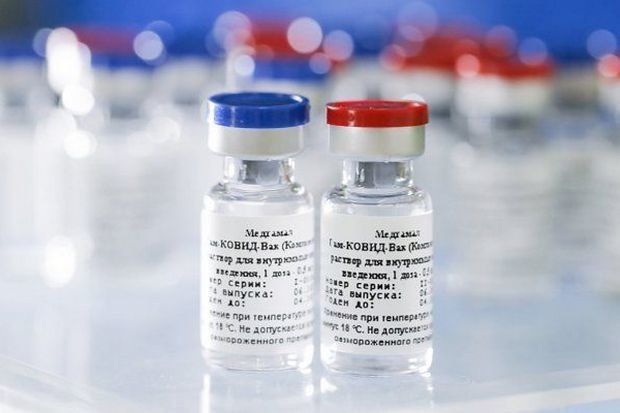
The world's first registered vector vaccine based on a new technology platform - human adenoviruses Ad26 and Ad5, carrying the coronavirus S protein gene. Developed at NICEM named after. Gamaleya, Russia. The Sputnik V post-registration clinical trial conducted in Russia involved 40,000 volunteers.
The effectiveness of the Sputnik V vaccine at 91.4% was confirmed as a result of data analysis at the final control point of clinical trials. The effectiveness of the Sputnik V vaccine against severe cases of coronavirus infection is 100%.
Sputnik V is stored at -18°C. One ampoule contains five doses. However, after defrosting it should be used within 30 minutes. There is also a lyophilized (dry) version of the Gam-COVID-Vac-Lio vaccine, which is stored at 2-8°C, but it is still at the stage of clinical trials.
As with the AstraZeneca vaccine, there is a chance that the patient already has immunity against human adenoviruses. Such immunity may reduce the effectiveness of the vaccine or even lead to an immunological reaction. That is why Sputnik V includes two components based on different adenoviruses (Ad26 and Ad5). At the same time, the chances that there is immunity against both vectors are minimal, which means that at least one of the components of the vaccine will work in full force.
At the same time, during the first immunization, immunity against the vector may develop, which may lead to decreased effectiveness in the future. That is, the question remains whether it will be possible to use other vaccines on the same technological platform in the future by the same patients.
This is relevant if the vaccine is included in the annual vaccination schedule, but the problem is not relevant in the current pandemic. Additional research and observation is required to see whether immunity to the adenoviral vector will lead to other side effects, for example, antibody-dependent enhancement of not only coronavirus, but also human adenoviral infections.
"EpiVacCorona"
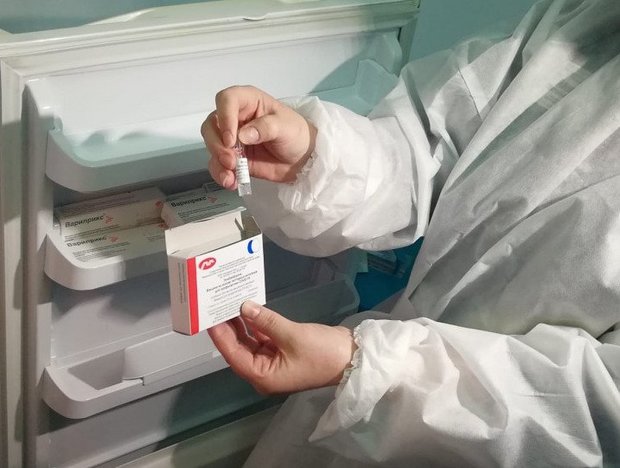
The “EpiVacCorona” vaccine was developed by the State Scientific Center for VB “Vector”, Russia. It consists of three synthetic peptides, which are fragments of coronavirus protein 8. The vaccine is stored dry at 2-8°C.
The vaccine is based on classical technology widely used in the creation of vaccines. It is positioned as areactogenic, that is, not causing strong adverse immunological reactions, and can be used for all ages and allergy sufferers, as well as for reimmunization.
However, the peptides included in the vaccine induce an immune response only to a small part of the virus, and to non-structural protein 8 (and not the surface hairpin protein S), which does not lead to the formation of neutralizing antibodies.
"Kovivak"
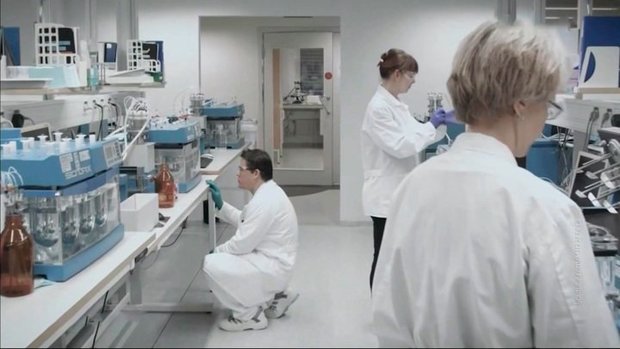
The vaccine “Kovivak” (this is the working name for now) was developed by the Federal State Budgetary Institution “FNTsIRIP named after. M.P. Chumakov RAS", Russia. Made using traditional technology, in which the virus is grown in bioreactors on Vero cells, collected and killed (inactivated) so that it can no longer cause disease. Clinical studies have not yet been completed, and data on the effectiveness and safety of the vaccine is not publicly available.
The presence of an intact, killed virus provides the most comprehensive immune response to all viral proteins.
At the same time, during vaccine production there are risks of contamination with xenogeneic material (remnants of Vero cells used to reproduce the virus). In addition, due to its complex composition, the vaccine may produce a less predictable immune response that varies widely between patients. And the effectiveness of such vaccines is sometimes not the highest.
This is why modern vaccines are moving to other technology platforms that guarantee the exact composition of the vaccine and the strongest possible immune response. However, this is a technology that has proven itself for decades, and “an old horse will not spoil the furrow” (although it will not plow deeply...).
Comparison of the cost of foreign and Russian vaccines
Russian-made vaccines are administered to children at a local clinic absolutely free of charge.
The cost of foreign vaccinations depends on a number of factors: country of origin, composition, etc.
For example, the popular drugs for immunization against whooping cough, diphtheria and tetanus (DPT) Pentaxim and Infanrix Hexa will cost 2-2.5 thousand on average (excluding the price of services of a paid vaccination center).
Single-component foreign-made vaccinations usually cost between 1-1.5 thousand rubles.
Reviews from doctors
Experts recommend approaching the issue of choosing vaccines as responsibly as possible. This is not just a question of whether it is worth vaccinating with a Russian drug or its foreign analogue - it is important to take into account the health characteristics of a particular child, possible risks, timing of administration, as well as other factors.
All vaccines on the modern market are safe and certified, their effectiveness is approximately the same. Generally speaking, foreign analogues in most cases:
- easier to tolerate;
- contain fewer components harmful to health;
- have a more convenient administration schedule (you need to visit the clinic less);
- are much more expensive.
Responsibility for the health of the child lies only with the parents, therefore, before vaccination, experts recommend donating blood and urine, as well as undergoing an examination by a competent pediatrician. And of course, the home medicine cabinet should contain modern antihistamines and antipyretic drugs, so that if negative reactions to the vaccine occur, they can be quickly stopped.
Claimed effectiveness of vaccines
Pfizer claims 95 percent protection against COVID-19 for its vaccine. Moreover, the statement was made on the basis of 170 sick people (the total number of trial participants was 40 thousand), of which only eight people received the real vaccine. There are isolated cases of severe allergic reactions (at the level of one case per 100,000 vaccinated people). Recently, information was published on the website of the Norwegian Medicines Agency about 23 nursing home patients who died after being vaccinated with the Pfizer vaccine. However, it is worth noting that these were people over 80 years old, suffering from a whole bunch of chronic diseases, and the vaccine was tested on people 18-65 years old. In Norway, about 400 nursing home residents die every week from natural causes. Against this background, it is quite difficult to determine what was the cause of death.
Any vaccine is additional stress for the body. In general, the situation is like Filatov’s in a fairy tale: “Although it tastes cool, and sometimes people die from it, but those who survive live to old age!..”. The country's authorities continue the vaccination program. As are the Israeli authorities, whose entire population plans to vaccinate over the next 2-3 months.
Of the 30 thousand volunteers participating in the Moderna experiment, 95 people were diagnosed with Covid-19, 90 of them in the placebo group. Thus, the effectiveness of the vaccine is declared at 94.5%.

At the beginning of 2021, Russian Health Minister Mikhail Murashko announced that 1.5 million doses of the vaccine had been delivered to the country's regions and more than 800 thousand people had already been vaccinated. Photo: kremlin.ru
But Sputnik V has already begun to be used in a number of countries. The vaccine is available not only in Russia, but also in Belarus, Argentina, as well as Brazil, India and the United Arab Emirates. The vaccine is officially stated to be 92% effective.
At the beginning of 2021, Russian Health Minister Mikhail Murashko announced that 1.5 million doses of the vaccine had been delivered to the country's regions and more than 800 thousand people had already been vaccinated. According to figures from the Ministry of Health, the only side effects reported in patients are common post-vaccination reactions, such as headache and fever. Statistics in Argentina say that such reactions to the vaccine were detected in 317 out of 32 thousand people who received the vaccine. There is no data on severe side effects from the Sputnik V vaccination.
It is known about the EpiVacCorona vaccine that its effectiveness is stated at 92%. No serious side effects were identified.
The AstraZeneca vaccine has shown varying effectiveness across different routes of administration. When the first and second doses of the vaccine were complete, the effectiveness was 62% (based on data from 8,895 patients). However, if the first dose was half and the second full, the effectiveness was 90% (based on data from 2,741 patients). As a result, the average efficiency was determined to be 70%. This is enough to confidently exceed the 50% effectiveness threshold set by the World Health Organization (WHO) as the minimum for vaccines. The reasons for this difference in the effectiveness of the two studies are not yet clear. Perhaps this is what prompted AstraZeneca to cooperate with the Gamaleya center. Indeed, by combining vaccines based on different adenoviral vectors, it is possible to ensure a higher effectiveness of the drug, bypassing the body’s immune shield from the vector itself. Well, for Sputnik V this could become a loophole into the European market.
The vast majority of vaccines currently being developed and used require two injections. The first leads to the development of immunity, and the second “fixes” and strengthens the immune system. It is believed that immunity against COVID-19 after vaccination will last for one year, but this is not accurate data. It is known so far that antibodies in the blood of the majority, but not all (!), of those who have recovered from COVID-19 remain at a fairly high level for 6-8 months, although they gradually decrease. Wait and see.

Photo: nso.ru
The vast majority of vaccines currently being developed and used require two injections. The first leads to the development of immunity, and the second “fixes” and strengthens the immune system.



